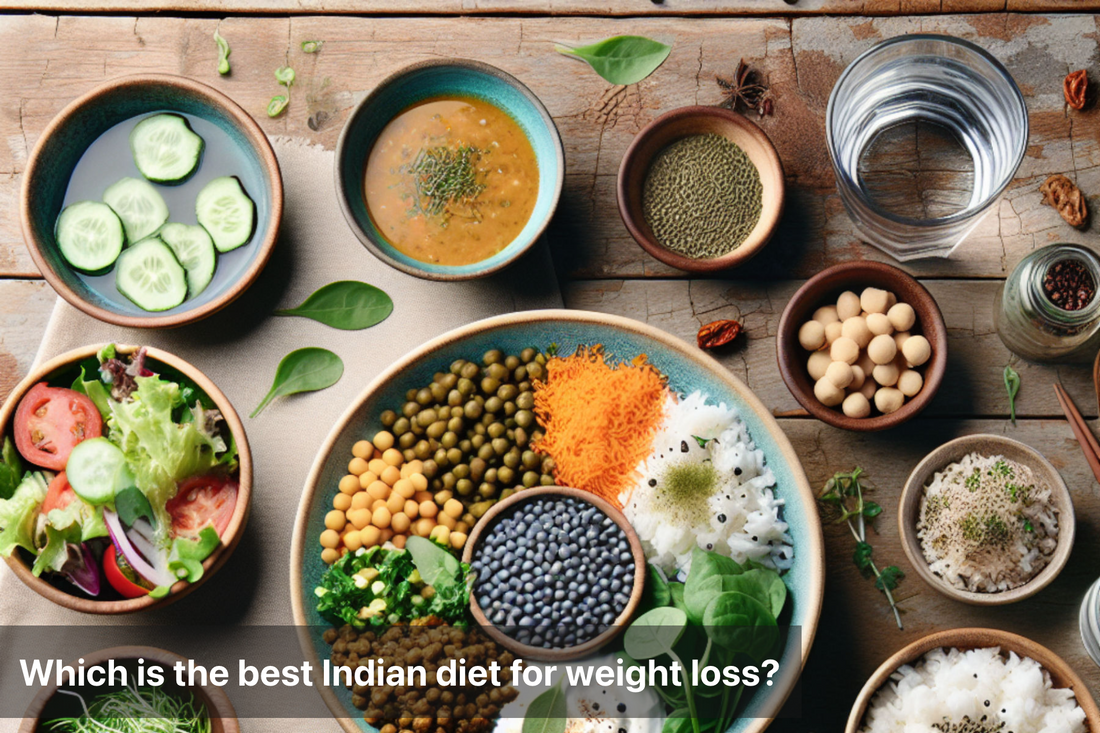
Which is the best Indian diet for weight loss?
Share
Indian diets offer a diverse and rich approach to weight loss, leveraging traditional foods and practices to promote well-being. The significance of these diets lies in their ability to combine taste with healthy choices, making them sustainable for long-term results. When considering a diet plan for weight loss, Indian cuisine presents numerous options that can cater to various preferences, whether you are a vegetarian or a meat lover.
An Indian diet for weight loss emphasizes whole, unprocessed foods. Incorporating fresh vegetables, legumes, whole grains, and healthy fats from sources like nuts and seeds can create a balanced dietary strategy. Moreover, many regions in India provide specific weight loss recipes, such as those found in a typical South Indian diet plan, which often uses ingredients like idli, sambar, and greens, known for their nutritional benefits.
Choosing an Indian weight loss diet helps in making informed decisions about food. By integrating local flavors while focusing on nutritional value, individuals can adhere to their weight loss goals without feeling deprived. Overall, this diet offers practical solutions that blend tradition with health, proving that it is possible to enjoy flavorful meals while striving for weight loss success.
Understanding the Basics of an Indian Weight-Loss Diet
An ideal weight-loss diet includes:
Balanced Macronutrients: Adequate amounts of carbohydrates, proteins, and fats to fuel your body and maintain energy levels.
Rich in Fiber: Fiber aids digestion, keeps you full longer, and prevents overeating.
Low in Processed Foods: Minimizing processed and sugary foods helps reduce calorie intake.
Hydration: Drinking plenty of water is essential to aid metabolism and prevent bloating.
Inclusion of Spices: Spices like turmeric, cumin, and ginger boost metabolism and aid digestion.
Sample Indian Diet Plan for Weight Loss
Meal |
Food Items |
Calories |
|---|---|---|
Breakfast |
Oats porridge with almond milk and fruits, or poha with vegetables |
250-300 |
Mid-Morning Snack |
A handful of mixed nuts or a bowl of cucumber and carrot sticks |
100-150 |
Lunch |
Brown rice or whole wheat chapati, dal, sabzi (mixed vegetables), and salad |
400-450 |
Evening Snack |
Green tea with roasted chickpeas or makhana (fox nuts) |
100-150 |
Dinner |
Grilled paneer/tofu with soup and steamed vegetables, or a light khichdi |
350-400 |
Total |
|
1200-1400 |
Health Coach Neha Singh (MSc - dietetics & food service management) suggests “Eating well is a form of self-respect.”
Key Components of an Indian Weight-Loss Diet
Whole Grains: Opt for whole grains like brown rice, quinoa, or millets instead of refined grains.
Plant-Based Proteins: Incorporate lentils, beans, tofu, and paneer to meet protein requirements.
Healthy Fats: Use sources like ghee, coconut oil, nuts, and seeds in moderation.
Seasonal Vegetables and Fruits: Include a variety of fresh, seasonal produce to boost nutrient intake.
Herbs and Spices: Use turmeric, fenugreek, cinnamon, and black pepper to enhance flavor and metabolism.
Benefits of an Indian Diet for Weight Loss
Culturally Relevant: Uses locally available ingredients and traditional cooking methods.
Rich in Nutrients: Packed with vitamins, minerals, and antioxidants.
Versatile: Offers a variety of flavors and textures, making it easier to stick to.
Supports Digestion: Includes ingredients like ginger and cumin, which aid digestion.
Sustainable: Focuses on whole, unprocessed foods that are affordable and accessible.
Sample Weekly Indian Weight-Loss Diet Plan
Day |
Breakfast |
Lunch |
Dinner |
|---|---|---|---|
Monday |
Vegetable upma |
Dal with chapati and salad |
Grilled fish with steamed veggies |
Tuesday |
Moong dal chilla with chutney |
Rajma with brown rice and curd |
Palak paneer with soup |
Wednesday |
Smoothie with chia seeds |
Vegetable khichdi and salad |
Tofu stir-fry with quinoa |
Thursday |
Idli with sambar |
Chicken curry with chapati and salad |
Vegetable soup with paneer tikka |
Friday |
Fish curry with brown rice and veggies |
Lentil soup with roasted veggies |
|
Saturday |
Poha with peanuts |
Chana masala with chapati |
Grilled vegetables with hummus |
Sunday |
Oats porridge |
Vegetable biryani with raita |
Light vegetable stew |
Summary
Choosing the right Indian diet for weight loss involves understanding your personal preferences, health goals, and lifestyle. It’s essential to tailor your approach to what works best for you. Begin by exploring various options, such as a traditional north Indian or a south Indian diet plan for weight loss, to find what suits your palate and nutritional needs.
Consider incorporating wholesome ingredients typical of an Indian diet for weight loss. Foods like lentils, whole grains, and plenty of vegetables can be foundational. Adopting portion control and mindful eating habits will support your weight loss journey significantly. Aim to enjoy flavorful weight loss recipes Indian style that not only satisfy your hunger but also nourish your body.
In addition, it may be helpful to consult with a nutritionist who understands the nuances of Indian cuisine. They can aid in crafting a personalized diet plan for weight loss Indian, aligning it with your goals. Remember, consistency is key. By making these informed dietary choices, you can achieve sustainable weight loss while enjoying the rich flavors of Indian food.
FAQs
-
Can I eat rice and still lose weight?
Yes, you can include brown rice or small portions of white rice in moderation. Pair it with proteins and vegetables for balance.
-
How can vegetarians get enough protein?
Lentils, beans, tofu, paneer, and quinoa are excellent vegetarian protein sources.
-
No, ghee in moderation provides healthy fats that support metabolism and overall health.
-
Are Indian snacks suitable for weight loss?
Choose healthy snacks like roasted chickpeas, makhana, or fruits instead of fried options.
-
How much should I eat in a day?
Aim for a daily intake of 1200-1500 calories, depending on your activity level and weight-loss goals.


